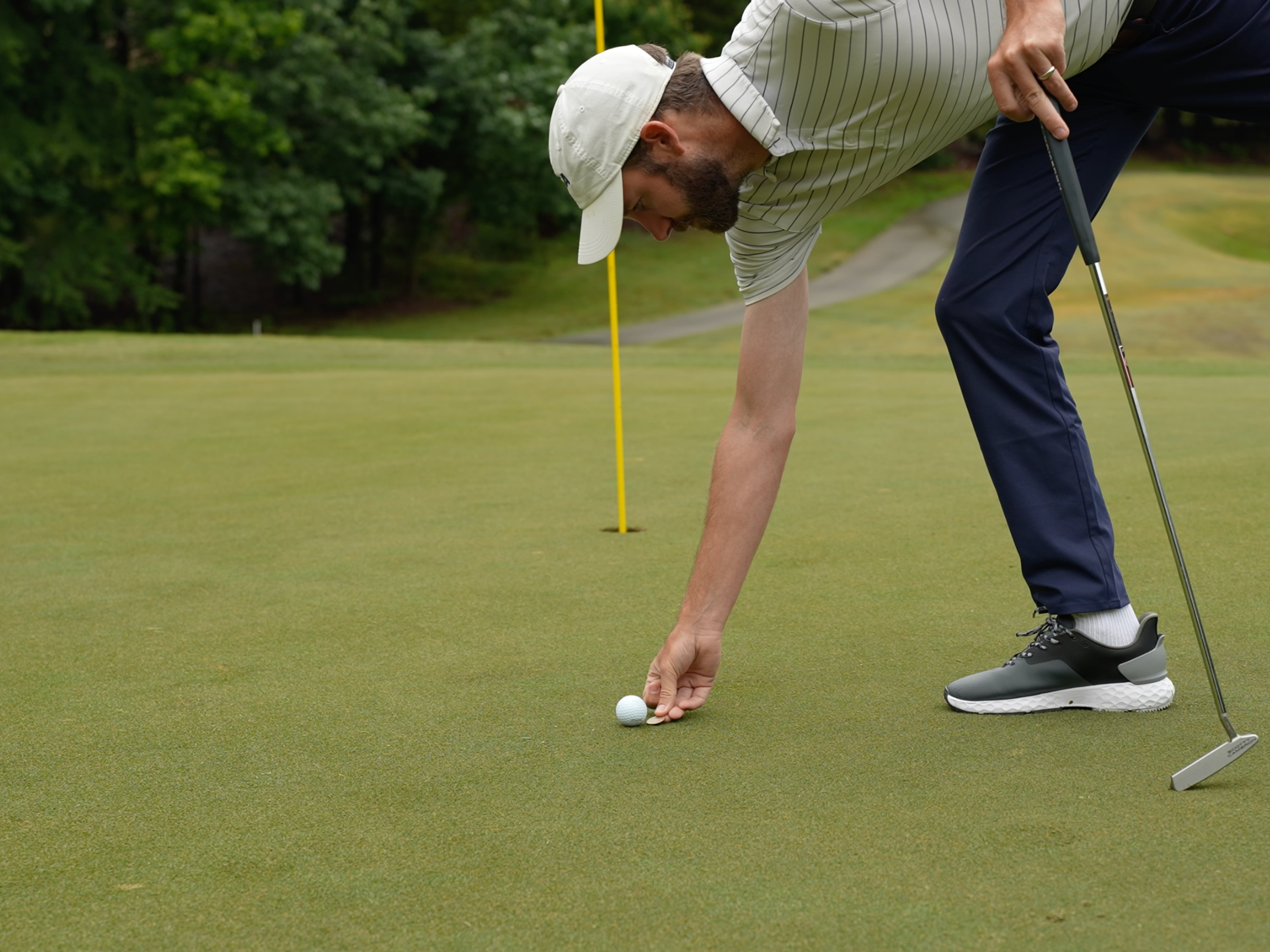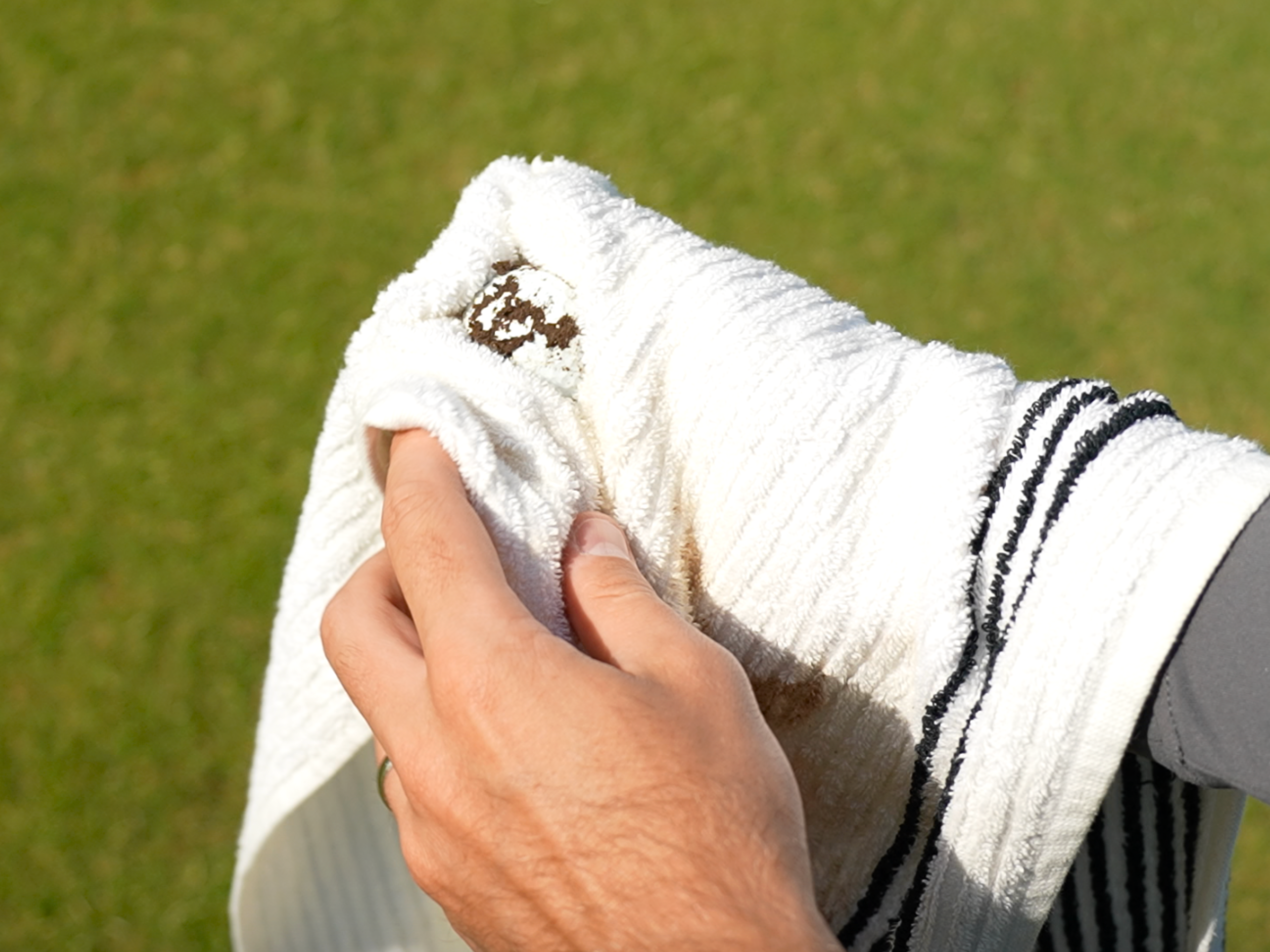Golf in its simplest form would have players tee off and play the ball all the way into the hole without ever touching it. But we know that golf is not that simple and there are numerous occasions when it is necessary to get your hands on the golf ball. However, because golf’s principles would not give you blanket permission to touch the ball whenever you want, it’s important to know when you can and cannot lift the ball and what you have to do to lift the ball without getting a penalty.

When Can You Lift the Ball?
You are allowed to lift the ball in a number of situations, for example:
- When the ball is on the putting green.
- When you are entitled to relief from a situation – with or without penalty (abnormal course condition, embedded ball, penalty area, etc.), and you take relief.
- When lifting for identification, because the ball is believed to be cut or cracked, because it might interfere with another player’s play or to determine if the ball is in a condition where relief is allowed.
When Do You Need to Mark the Ball?
The ball needs to be marked before lifting it when the ball is going to be put back in the same spot. So, if you are taking relief from a cart path, you do not need to mark the ball on the cart path because you are going to be dropping it somewhere else. When you lift the ball from the putting green, you have to put the ball back on the same spot, so you need to mark its position first. Other instances you must mark the ball before lifting it:
- Lifting for identification.
- Lifting to determine if the ball is cut or cracked.
- Lifting an interfering ball.
- Lifting a ball to determine the application of a Rule.
Who Can Mark and Lift the Ball?
Anyone is allowed to mark the ball without touching it. A caddie, another player, opponent, a rogue spectator – there is no restriction in the Rules on who can mark the ball.
On the other hand, only THREE people are allowed to actually touch and lift your ball: you, your partner or someone else you authorize to lift the ball. That’s right, the caddie does not have authorization to lift your ball without first getting your permission each time they want to lift the ball, except when the ball is on the putting green. If the ball is on the putting green, your caddie is allowed to mark and lift your ball at any time without authorization.
How Do You Mark the Ball?


To mark your ball you should use a small coin or something similar and place the object immediately behind the ball. But you can use other objects including a tee or the toe of the club. The key is that you must physically mark the position of the golf ball with an artificial object, you cannot use an existing blemish on the putting green to identify the spot or a natural object. The whole purpose behind marking is that you are going to put the ball back on the same spot. If the method you use does not successfully allow you to do that, you will end up being penalized.
Once you remove your hand from the ball after replacing it, the ball is back in play, even if the ball-marker is still there.
One other thing you need to know is that once you put your ball back down, you need to remove the ball-marker before you make the stroke.
If you don’t mark the ball before lifting it, don’t mark the ball in the right way or forget to remove the ball-marker before making the stroke – you get one penalty stroke.
When Can You Clean the Golf Ball?
The real question is when can you NOT clean your golf ball. The Rules allow you to clean your ball any time it is lifted with only four exceptions. So, what the Rule means is that any time you get your golf ball in your hand, you can clean it (minus the exceptions discussed below). Some examples of when you can clean the ball:
- When lifted from the putting green,
- When lifted to take relief from a cart path,
- When lifted to take relief for an embedded ball,
- When lifted to take relief from temporary water,
- When lifted to be replaced after accidental movement,
- When lifted to take relief from a penalty area.
And the list can go on. Don’t confuse the ability to clean the ball with the absence of a penalty. If you accidentally move your ball in the general area, you get a one-stroke penalty and must replace the ball. In that moment when you have the ball in your hand in order to replace it on the original spot – you could clean the ball.

When Are You NOT Allowed to Clean the Golf Ball?
When your ball is at rest on the ground, you cannot clean it. Most golfers don’t have a problem remembering that. But there are four occasions when the ball is in your hand that you are not allowed to clean the ball, so it’s important to remember these cases:
-
- When the ball is lifted for identification – you are only allowed to clean enough to identify it and not a smidgen more.
- When the ball is lifted because it might be cut or cracked.
- When the ball is lifted because it is interfering.
- When the ball is lifted to see if it lies in a condition where relief is allowed. If the ball is in a condition where relief is allowed, you could then clean the ball.
Even in these cases, any time your ball is lifted from the putting green, you may clean it.
But if you clean the ball while it is lifted for one of these reasons somewhere else on the course, you get one penalty stroke.





